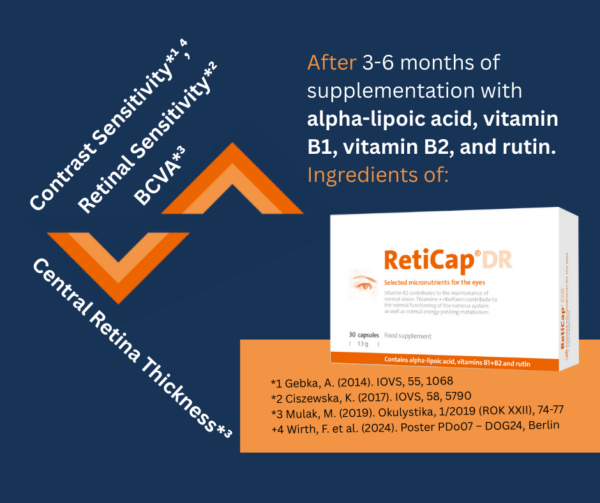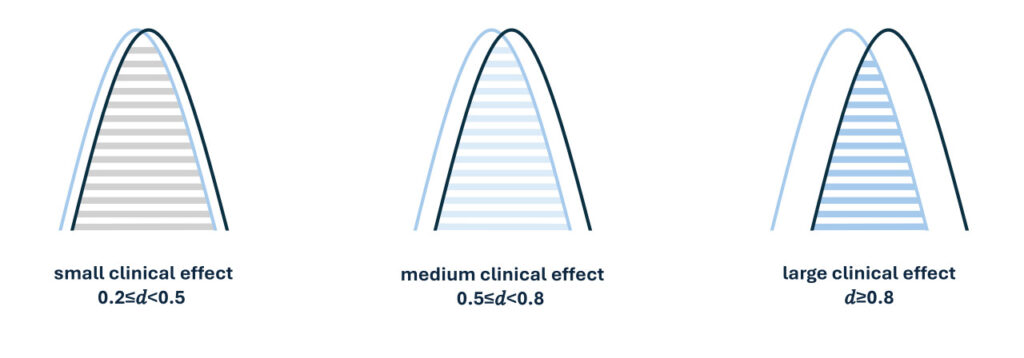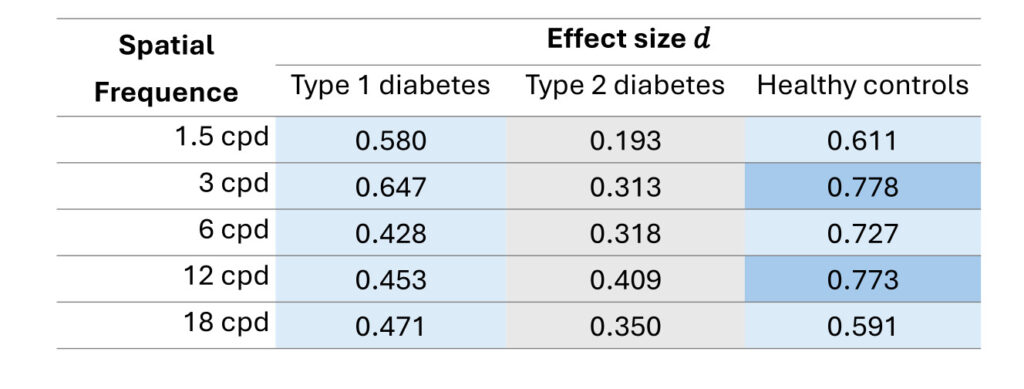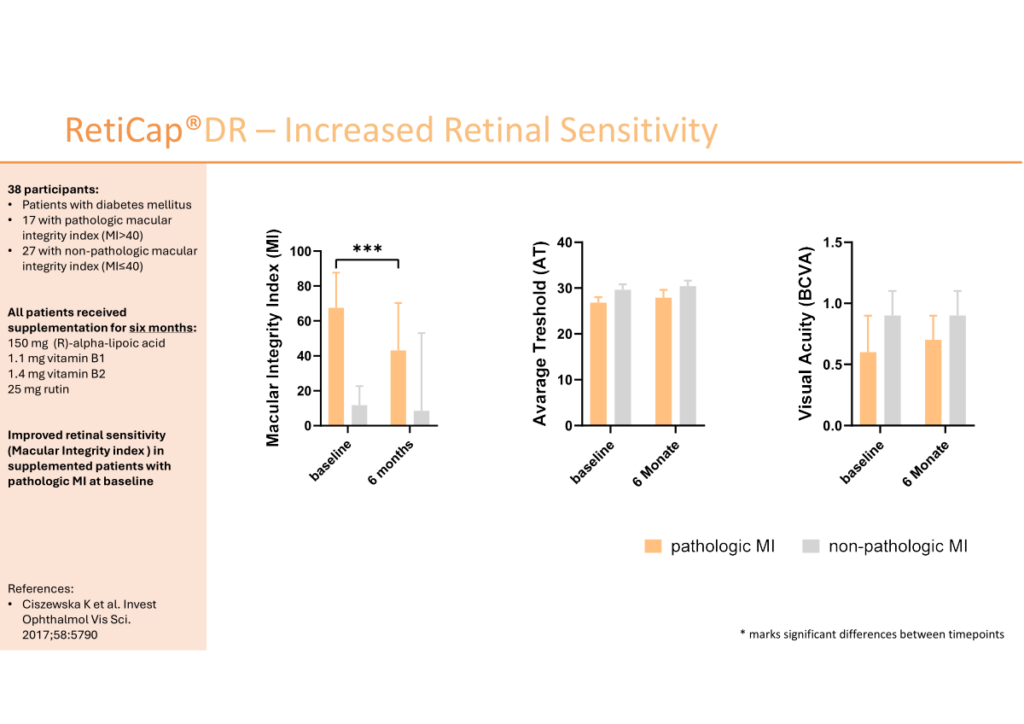
Diabetes Mellitus (DM) presents a wide range of health challenges, with diabetic retinopathy (DR) being one of its most significant complications. In industrialized countries, it is considered the leading cause of newly occurring cases of blindness in adults. However, even before diabetic retinopathy develops, contrast vision is often impaired, which is frequently an early sign of retinal damage. This can significantly impact the quality of life of those affected, even before more severe visual impairments occur.
Four publications in recent years have demonstrated that after three to six months of supplementation with 150 mg of R-alpha-lipoic acid (contained in 300 mg of racemate), 1.1 mg of vitamin B1, 1.4 mg of vitamin B2, and 25 mg of rutin, both visual function and functional as well as morphological parameters of the retina improved significantly.
Select a clinical study from the list below to access complete information on its design, results, and downloadable files.
This randomized case-control study investigated the effect of a six-month dietary management regimen with 150 mg R-alpha-lipoic acid (contained in 300 mg racemate), 1.1 mg vitamin B1, 1.4 mg vitamin B2, and 25 mg rutin on contrast vision in patients with type 1 diabetes (T1DM), type 2 diabetes (T2DM), and healthy controls.
A total of 136 patients aged 44 ± 14 years were included in the study:
They received daily supplementation for six months. During the same period, the control group received no supplementation:
Contrast sensitivity was assessed using the Functional Acuity Contrast Test (FACT, Stereo Optical) at various spatial frequencies (1.5, 3, 6, 12, and 18 cycles per degree [cpd]). Contrast sensitivity was quantified in contrast level increments (0–9), corresponding to a logarithmic contrast sensitivity (logCS) of 0.15.
Measurements were conducted under four different luminance conditions (LC):
While statistical significance measures the reproducibility of results (typically with a 95% confidence level), effect size helps determine the clinical relevance of an observed effect. To assess the clinical relevance of micronutrient supplementation for patients, effect sizes were calculated for all supplemented groups at each spatial frequency separately using Cohen’s d formula.

During the six-month study period, all groups that received dietary supplements showed a statistically significant improvement in contrast sensitivity across all spatial frequencies. In contrast, Type 1 diabetics who did not receive supplements experienced a decline in contrast sensitivity (1.5 to 6 cpd). Similarly, Type 2 diabetics without supplementation showed a decrease in contrast sensitivity (1.5 to 12 cpd). In the control group without supplementation, contrast sensitivity remained stable throughout the study period.

The effect size analysis revealed:

Based on the presented study results, a micronutrient supplement containing alpha-lipoic acid, vitamin B1, vitamin B2, and rutin could be considered for the nutritional management of diabetics—particularly those with type 1 diabetes. Type 2 diabetics may also benefit from improved contrast perception with appropriate supplementation. However, further research is needed to determine whether a similar effect size can be achieved in type 2 diabetes over a longer supplementation period, as observed in type 1 diabetes. Additionally, the findings suggest that this specific supplement may also be of interest to non-diabetics with reduced contrast sensitivity.
Watch this video with Dr. Franziska Wirth, where she presents Micronutrient supplementation with alpha-lipoic acid, vitamin B1, vitamin B2, and rutin improves contrast sensitivity in diabetic patients as well as healthy controls. at the Conference of the German Ophthalmological Society (DOG 2024) in Berlin.
For a closer look at the poster, click here: https://vivaquity.co.uk/wp-content/uploads/2025/04/RetiCap-DR_Poster_Micronutrient-Supplementation-in-Diabetic-Patients.pdf
Mulak, M., Oseka, M., & Sobol, M. (2019). The Impact of Oral Application of Alpha-Lipoic Acid, Vitamins B1 and B2, and Rutoside on the Morphological and Functional Retinal Changes in Patients with Diabetic Retinopathy. Okulistyka, 1/2019 (ROK XXII).
As part of the observational study, the effects of a six-month dietary management plan including 150 mg R-Alpha-Lipoic Acid (contained in 300 mg racemate), 1.1 mg vitamin B1, 1.4 mg vitamin B2, and 25 mg rutin on functional and morphological parameters of the retina in patients with non-proliferative diabetic retinopathy (T1DM and T2DM) were examined. Ophthalmological examinations were conducted before supplementation, after 3 months, and after 6 months. Measurements included best-corrected visual acuity (BCVA), ophthalmoscopy, intraocular pressure testing, visual field examination (using the Humphrey perimeter), optical coherence tomography, and fundus photography. The study was completed by 25 patients (50 eyes).
Over the six-month supplementation period, a statistically significant improvement in visual acuity (from 0.8±0.2 to 0.9±0.1; p<0.001) and a reduction in retinal thickness (from 225±45 µm to 210±18 µm; p<0.001) were observed in the optical coherence tomography examination. The visual field parameters (VFI: from 94.4±15.9% to 96.8±4.2%; MD: from -2.6±5.6 dB to -2.0±2.7 dB) and intraocular pressure values (from 17.1±3.0 mmHg to 16.6±2.3 mmHg) did not change.

The six-month supplementation with RetiCap micronutrients improved visual acuity in diabetics with non-proliferative diabetic retinopathy (NPDR) and reduced retinal thickness. The results of this study demonstrated that ALA, vitamins B1 and B2, and rutoside have a positive effect on the retina of patients with NPDR.
Ciszewska, K., Swiech-Zubilewicz, A., Mackiewicz, Jerzy, Oseka, M. K., & Bursukiewicz, A. (2017). Effect of the oral administration of alpha-lipoic acid, B1 and B2 vitamins, and rutoside on retinal sensitivity in patients with diabetes. Investigative Ophthalmology & Visual Science, 58, 5790.
As part of the observational study, the effects of a six-month dietary management plan with RetiCap micronutrients on the retinal sensitivity of diabetics were examined. The study included 38 patients (76 eyes). Two groups were distinguished: 17 patients with a non-pathological macular integrity index (MI>40; age: 59.0±10.5) and 27 patients with a pathological macular integrity index (MI≤40; age: 62.3±7.0).
All patients received a daily oral supplementation over 6 months containing 150 mg R-alpha-lipoic acid (included in 300 mg racemate), 1.1 mg vitamin B1, 1.4 mg vitamin B2, and 25 mg rutin.
At baseline and after 6 months, retinal sensitivity (MI & AT) and visual acuity (BCVA) were measured.
In diabetics with a pathological MI, the MI decreased from 67.5±20.2 to 43.1±27.2 (p<0.001), while AT increased from 26.8±1.2 to 27.9±1.7. BCVA improved from 0.6±0.3 to 0.7±0.2.
In diabetics with a non-pathological MI, the MI decreased from 11.7±11 to 8.5±11.5, AT increased from 29.6±1.2 to 30.4±1.2, and BCVA remained unchanged at 0.9±0.2.

The six-month supplementation with RetiCap®DR micronutrients improved retinal sensitivity in diabetics with a pathological macular integrity index (MI) and could therefore serve as an early prophylaxis for diabetic retinopathy.
As part of the randomised case-control study, the effects of a three-month dietary management plan with 150 mg R-α-lipoic acid (contained in 300 mg racemate), 1.1 mg vitamin B1, 1.4 mg vitamin B2, and 25 mg rutin on contrast vision in patients with type 1 and type 2 diabetes and healthy controls were investigated.
A total of 80 patients aged between 25 and 69 years were included in the study. Five type 1 diabetics (10 eyes), 28 type 2 diabetics (50 eyes), and 14 healthy participants (27 eyes) received daily supplementation over a 3-month period. At the same time, the control group—7 type 1 diabetics (12 eyes), 20 type 2 diabetics (33 eyes), and 6 healthy participants (11 eyes)—did not receive supplementation.
Contrast vision was quantified using the Functional Acuity Contrast Test (FACT, Stereo Optical) at various spatial frequencies (1.5, 3, 6, 12, and 18 cycles per degree [cpd]). Contrast sensitivity was assessed in steps of contrast level changes (0–9), corresponding to a logarithmic contrast sensitivity (logCS) of 0.15.
Contrast vision (CS) measurements were carried out under four lighting conditions (LC): 85.0 cd/m², 3.0 cd/m², 85 cd/m² with illumination of 135 lux/28 lux, and 3.0 cd/m² with illumination of 135 lux/28 lux.
In non-supplemented type 1 diabetics, a significant deterioration in contrast vision at spatial frequencies of 1.5 to 12 cpd was observed during the study. However, in T1DM patients who received supplementation for three months, no statistically significant change in contrast sensitivity was detected.
In non-supplemented type 2 diabetics, contrast vision significantly declined at spatial frequencies of 1.5 to 6 cpd after 3 months. In the supplemented T2DM group, contrast vision showed significant improvement at spatial frequencies of 12 cpd and 18 cpd.
Among healthy controls, contrast vision improved at a spatial frequency of 3 cpd following supplementation. Controls without supplementation showed no changes in contrast vision over the 3-month period.

The results suggest that supplementation with RetiCap®DR micronutrients may help counteract the loss of contrast vision in diabetics.
